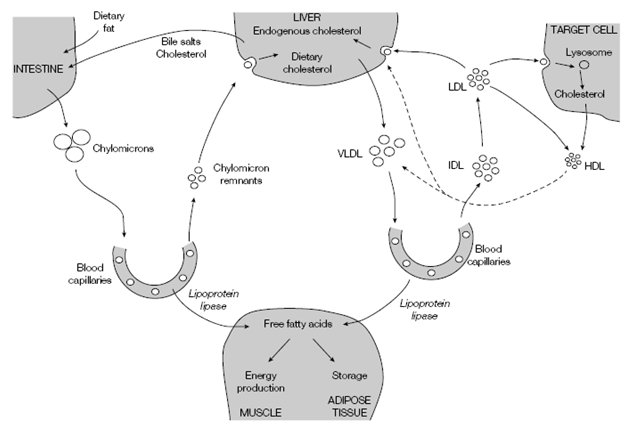Chylomicrons:
Chylomicrons, the widest of the lipoproteins, are synthesized in the intestine. They carrying ingested triacylglycerols to other tissues, majorly skeletal muscle and adipose tissue and transport ingested cholesterol to the liver described in the figure. At the goal tissues the triacylglycerols are hydrolyzed through the action of lipoprotein lipase, an enzyme situated on the outside of the cells which is activated through apoC-II, one of the apoproteins on the chylomicron surface. The released monoacylglycerols and fatty acids are taken up through the tissues and either used for energy.


Figure: The transport of triacylglycerol and cholesterol by lipoproteins.
production or re-esterified to triacylglycerol for storage. Because their triacylglycerol content is depleted, the chylomicrons shrink and create cholesterol-rich chylomicron remnants that are transported in the blood to the liver described in the figure. At this time they bind to a specific cell-surface remnant receptor and are taken up into the liver cells through receptor-mediated endocytosis.